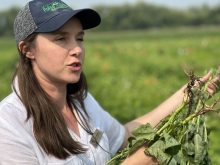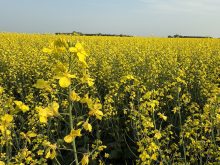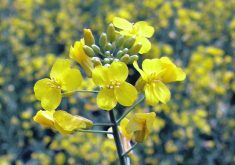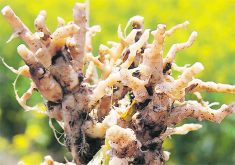University of Manitoba researchers test canola cultivars to identify genetic material that has tolerance to pod shatter
WINNIPEG — The pod shatter resistance trait for canola has been on the market for more than a decade. Bayer CropScience released the first commercial canola hybrid with it, InVigor L140P, in 2013.
Private and public breeding programs followed Bayer’s lead, introducing their own versions of canola with pods that are less likely to shatter in the wind and lose seeds, thus lowering yield and producing unwanted volunteers in subsequent years.
The technology is well established, but scientists are still curious about the genetic sources of pod shatter resistance.
One of those researchers is Lauren Gislason, a master’s student in plant science at the University of Manitoba.
Read Also

Huge Black Sea flax crop to provide stiff competition
Russia and Kazakhstan harvested huge flax crops and will be providing stiff competition in China and the EU.
“(We) want to give growers more options when they’re looking at pod shatter tolerance. It’s a really important trait for producers,” said Gislason.
She and her supervisor, U of M canola breeder Rob Duncan, have tested canola cultivars at Carman and other sites in Manitoba to identify material that has tolerance to pod shatter.
They grew the canola to maturity and then used a backpack leaf blower to simulate a windstorm of 90 km-h. Then they used a pod shatter rating system, developed by the Canola Council of Canada, to evaluate the damage done to the canola plants.
Members of the canola industry developed the pod shatter rating scale in 2021-22.
“The official canola shatter ratings of one to nine represent a cultivar’s pod shatter risk relative to designated checks. The higher the number, the greater the pod shatter resistance,” says the council website.
In her research project, Gislason rated the canola cultivars and began the hard work of connecting pod shatter resistance or susceptibility to the genetic code of the cultivars.
“The purpose of this research project is to identify genomic regions and molecular markers using quantitative trait loci (QTL) analyses,” says an abstract of Gislason’s research from a crop science conference in St. Louis.
Since a number of genes play a role, it is known as a quantitative trait.
“Many of the traits that plant breeders strive to improve are quantitatively inherited,” says Crop Genetics, a book by Walter Suza and Kendall Lamkey, professors at Iowa State University.
“A quantitatively inherited trait is controlled by many genes at different loci, with each gene … contributing a small effect to the expression of the character.”
In her research project, Gislason was able to identify several parts of the genetic code that influence shatter.
“I have analyzed all the data and we have found some regions of the genome that are controlling pod shatter tolerance and have genes that are related to pod shatter.”
Having this genetic information should benefit the canola breeding program at the U of M, she added.
“It’s important … so we’re not losing yield when we’re producing cultivars for registration.”


















